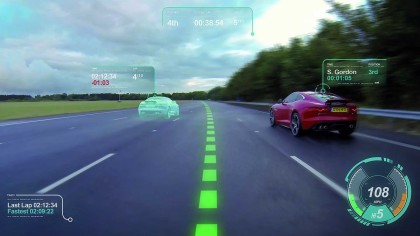 Larry Barnett lives in Sonoma where he was elected to three terms on the City Council and served twice as Mayor. A thirty-three-year resident, he currently serves as Chair of Sonoma's Planning Commission. He has been married for 48 years, has two daughters and three grandchildren.
Larry Barnett lives in Sonoma where he was elected to three terms on the City Council and served twice as Mayor. A thirty-three-year resident, he currently serves as Chair of Sonoma's Planning Commission. He has been married for 48 years, has two daughters and three grandchildren.
Virtual Reality is dead; long live Augmented Reality

Things move so quickly in digital technology that yesterday’s fad is old hat before it’s even reached maturity. Such is the case with Virtual Reality (VR), the technology that promised us the god-like chance to step into worlds of our own making so exciting that taking off our visors would leave us in an ordinary reality so drab and dull we’d be eager to return to our digital empires. Then again, the nausea and vomiting was a problem, and the geeky visors, admittedly, were not cool.
Then, just in the nick of time, Augmented Reality (AR) stepped in to save the day. No visors, no puking, just tons of fun playing with ordinary reality by adding special effects to our dull and uninteresting lives. AR allows an ordinary smart phone user to spice up life by adding visual effects to photos and videos, such as cute little Disney-like bluebirds flitting about the heads of our grandchildren and the ability to put grandpa’s face on little Mikey and vice-versa. Want flowers sprouting up alongside you walk through the park? No problemo, amigo; they can even be wearing little sombreros and sing mariachi songs.
Let’s face it, reality sucks; at least that’s the message Google and Apple and the world of high-tech want us to believe. It’s so, predictable, so boring, so unsatisfactory; it’s terrible to suffer so, or thus the purveyors of AR would have us believe. So now we can add a mustache to mommy’s face and that will make things much better, the light side of AR.
The dark side of (AR), however, gets much less press and promotion. AR uses much of the technology employed by the film industry, CGI technology. CGI is in the forefront of using facial and body movement mapping to create simulated humans; putting real people’s voices into the faces of imaginary characters and matching lip, eye and facial muscle movements to replicate human gestures and expressions onto the faces and bodies of human-looking characters. If you’ve seen the newest Planet of the Apes movies, you’ve seen how sophisticated the technology has become. But it goes beyond that; gestures, expressions and voices can now be mapped onto the digitized faces of real people, making it possible to create completely fake speeches, reactions and comments impossible to distinguish from the real thing.
What’s being called “fake news” today is not even close to how fake the news will be going forward. Photographic evidence will entirely lose its credibility, sound-bites will all be suspect, videos will lose their evidentiary value. In short, the very idea of relying on “objective reality” will become nearly impossible as manufactured AR becomes indistinguishable from unaltered visual and audio records.
Our culture repeatedly adopts new technologies before prudent consideration of their potential downsides. The hacking of 143 million Americans personal information from Equifax is a perfect example of how poorly we can protect the lnternet from intrusion and theft, and Equifax is in the web security business! AR creates a similar set of risks, opening the possibility of digital doppelgängers indistinguishable from the real person. In the not so distant future, when your daughter calls you on FaceTime, how will you know for certain that it’s really her? It’s her voice, it’s her face, it’s her gestures; how will you know?



